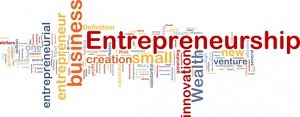Every news article you read, there’s something about company innovation. You can scale that to the size of your operation, and that can be in the realm of a self-published book, for example.
The examples I love and which inspire are:
- Amazon’s Jeff Bezos just purchased The Washington Post for $250 million.
- Google Co-founder Sergey Brin just financed $323,000 for the first lab-created hamburger by Dutch scientists. Apparently, the frankenmeat needed seasoning, said tasters.
- Target has decided to go mobile app crazy and social media heavy in quick time. Usually big-box retailers take a year to launch a new clothing line…now innovation and time to market is critical.
Why Is Innovation Important?
Innovation is about remaining relevant. Companies that produce the same product or service the same way every day are not being innovative.
Companies that remain the same with no change for consumers become surely irrelevant.
Small businesses that never painfully challenge the status quo get stagnant after awhile.
Solopreneurs who never push the envelope to try new things cannot rise to the next level.
What is Innovation?
In this day and age, innovation can be defined in a variety of ways:
- New products or services
- New authority for the CEO
- Increased levels of engagement by a company team
- New realization that consumers are king.
Consumer Is King; Content is Queen
I want to focus on that a moment; consumers are king. We’ve been hearing for awhile now that content is king. Nope. The throne is squarely in control of the consumer.
To innovate, companies need to understand consumer is king.
- What does your consumer need to keep coming back to your business?
- Where do you need to engage with consumers?
- Where are they engaging with you?
The takeaway today is not really about defining innovation, because most of us know and understand what that means. Knowing what it takes based on market and consumer research, understanding the inside of your company, and knowing what business goals the company has set are all aspects of successful innovation.
This is such a broad subject, and I’ve only toplined a smidge of this topic. How do you break it down?



















